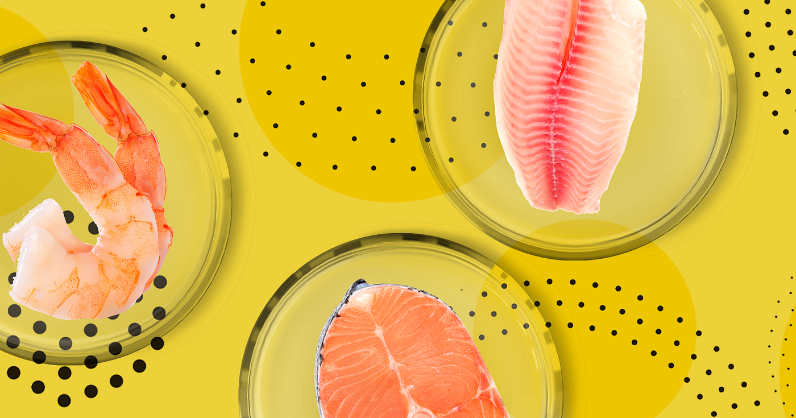Description

Disclaimer: Copyright infringement not intended.
Context:
- The Central Marine Fisheries Research Institute (CMFRI) initiates a groundbreaking project for lab-grown fish meat.
Lab-Grown Fish
- Lab-grown fish, also known as cultivated or cell-based fish, is produced through cellular agriculture techniques in a controlled environment.
Process:
- Specific cells are isolated from fish tissue.
- Cells are then cultured and grown in a laboratory setting using animal component-free media.
Replication of Qualities:
- Final product replicates the original flavor, texture, and nutritional qualities of conventionally harvested fish.
Objectives:
- Address the increasing demand for seafood.
- Alleviate pressure on wild fish populations and resources.
Environmental Impact:
- Offers potential benefits for environmental conservation by reducing overfishing and habitat destruction associated with traditional fishing.
Significance:
- Provides an alternative to conventional fishing methods, contributing to the sustainability of seafood production.
- Reduces the ecological footprint associated with traditional fisheries.
Challenges:
- Overcoming technical challenges in achieving the right texture, taste, and nutritional content.
- Addressing public perceptions and regulatory frameworks.
Nutritional Value:
- Lab-grown fish aims to match or exceed the nutritional content of traditionally harvested fish.

Central Marine Fisheries Research Institute (CMFRI) Project
Project Objectives:
- Address the increasing demand for seafood in India.
- Make advancements in the field of cultured marine fish meat.
- Alleviate pressure on wild fish resources.
Cultivated Fish Meat Process:
- Involves isolating specific cells from fish.
- Grown in a laboratory using animal component-free media.
- Final product replicates original flavor, texture, and nutritional qualities.
Initial Phase Focus:
- Development of cell-based meat for high-value marine species like kingfish, pomfret, and seer fish.
Collaboration with Neat Meatt Biotech:
- Public-private partnership mode with Neat Meatt Biotech, a startup specializing in cultivated meat.
- Memorandum of Understanding (MoU) signed between CMFRI Director A Gopalakrishnan and Neat Meatt Biotech's co-founder and CEO, Dr Sandeep Sharma.
Research Responsibilities Defined:
- CMFRI to conduct research on early cell line development of high-value marine fish species.
- Involves isolating and cultivating fish cells for further research and development.
- CMFRI to handle genetic, biochemical, and analytical work related to the project.
Infrastructure and Expertise:
- CMFRI equipped with a cell culture laboratory with basic facilities.
- Solid foundation for research in cellular biology.
Neat Meatt's Role:
- Leading optimization of cell growth media.
- Developing scaffolds or microcarriers for cell attachment.
- Scaling up production through bioreactors.
- Providing necessary consumables, manpower, and additional equipment.

Significance of the Partnership:
- Bridges the gap between India and nations like Singapore, Israel, and the USA advancing cultured seafood research.
- Lab-grown fish holds potential for environmental and food security benefits.
- Collaboration leverages CMFRI's marine research expertise with Neat Meatt's technological know-how.
Future Prospects:
- Paves the way for a sustainable and secure future for seafood production in India.
- Marks a crucial step in the development of cultured seafood research in the country.
|
PRACTICE QUESTION
Q. Consider the following statements regarding lab-grown fish:
1.The process involves isolating specific cells from fish tissue and growing them in a laboratory using animal component-free media.
2.Lab-grown fish aims to replicate the taste and texture of conventionally harvested fish.
3.The primary objective of lab-grown fish is to reduce pressure on wild fish populations and resources.
Which of the above statements are correct?
A) 2
B) 1 and 3
C) 2 and 3
D) 1, 2, and 3
Answer. D) 1, 2, and 3
- The process involves isolating specific cells from fish tissue and growing them in a laboratory using animal component-free media.
-
- This statement is correct. Lab-grown fish is produced through cellular agriculture techniques where specific cells from fish tissue are isolated and cultivated in a laboratory environment, using media that is free from animal components. This technique avoids the traditional fishing methods.
- Lab-grown fish aims to replicate the taste and texture of conventionally harvested fish.
-
- This statement is correct. One of the primary objectives of lab-grown fish is to replicate the original taste and texture of conventionally harvested fish. The aim is to provide a product that closely resembles traditionally sourced seafood.
- The primary objective of lab-grown fish is to reduce pressure on wild fish populations and resources.
-
- This statement is correct. Lab-grown fish is developed with the main objective of addressing the increasing demand for seafood while simultaneously reducing the pressure on wild fish populations and marine resources. It offers a sustainable alternative to conventional fishing methods.
|
















